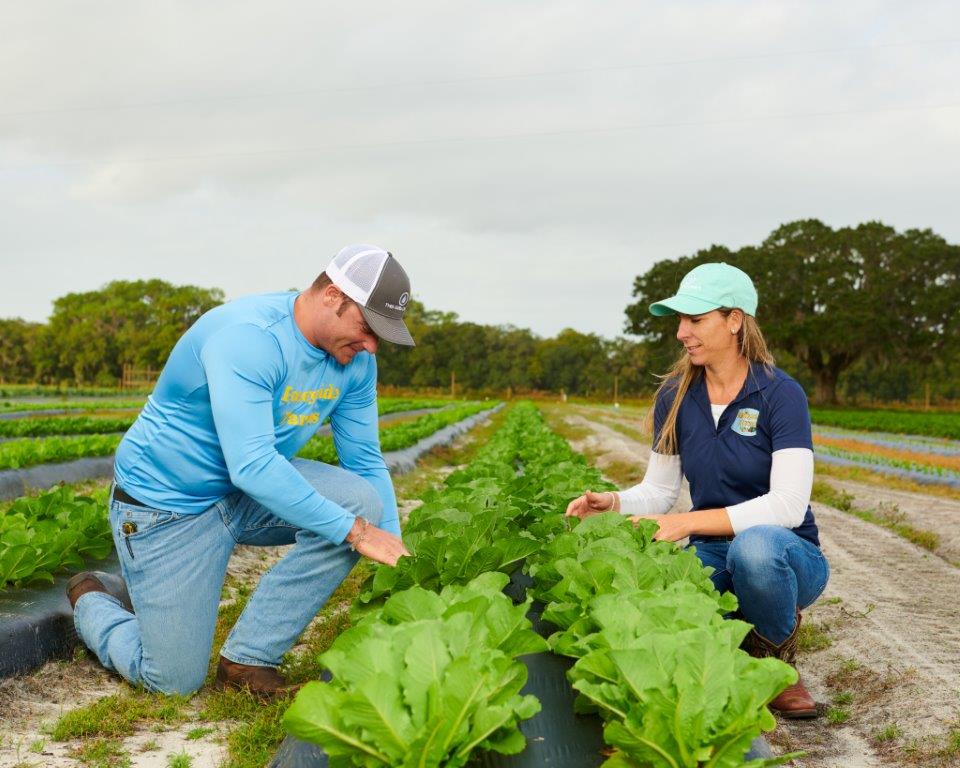
By Tiffany Bailey
At Honeyside Farms, we have been growing produce using organic practices for over 10 years. When we needed to move farm locations, we found a piece of farmland that could become certified organic. So, we decided to go for it. These are the top lessons we learned in our first year as a fully certified organic farm.
1: RECORDS ARE YOUR FRIEND
Before deciding to become certified organic, we spoke with many growers about the benefits and challenges of becoming certified. One of the constant negatives we heard about was intense recordkeeping. The recordkeeping has proven to be intense, but the information we have collected has been extremely valuable. We quickly discovered that we needed to plan recordkeeping into every day.
We use a series of Excel spreadsheets on a computer to keep track of all our records. At the end of every day, our farm manager cools off in the air conditioning while updating all the spreadsheets with information from that day. This usually takes about 30 minutes. When the season is wrapping up, it has been well worth the time to sit down and analyze how the information we collected can be used to make future decisions.
2: YOU CAN’T GROW EVERYTHING
While it may seem obvious that different crops have different costs, it is important to evaluate the costs involved with everything from seeds to post-harvest and handling. Especially on a small scale, not all crops can bring in enough revenue to justify growing and handling them.
This can be hard, especially when you have an item that is a customer favorite. But it is important to understand all the different types of costs so you can grow what makes sense financially. If you don’t make the money you need, you won’t be able to sell anything to your customers.
3: NEW GROUND BRINGS NEW CHALLENGES
If you are going to grow something on a new piece of ground, expect to deal with some new challenges. Sometimes there is just no way of knowing how something will grow until you have your first crop there. Consider growing a lower risk type of crop on the first go-around. This will give you an opportunity to assess things like drainage, nutrient retention and soil insects.
On one of our new blocks, we discovered a heavy population of mole crickets that fed on our seedlings. It was an expensive discovery, but we did gain knowledge on how to approach new ground.
4: CAREFULLY SOURCE YOUR LIQUID FERTILIZER
These days, there are so many Organic Materials Review Institute products to choose from. Many liquid fertilizers have good numbers on the label but can come with some challenges related to clogging filters and drip tape. Make sure you know another grower who has used the product successfully before you commit to using it.
You may not get everything you need in one liquid blend. You may have to apply certain nutrients through foliar applications or from a dry mix.
5: THE WORK IS NEVER ALL DONE
Organic farming is more work — period. You can’t just spray something and have 21 days of control. So, the field is always needing some sort of attention. And let’s not forget about the office work and recordkeeping that come along with complying with organic standards.
It is important to make an actual list of your priorities. Manage your time well and try to create routines out of repetitive tasks so you can be as productive as possible. Make sure you are taking time to do important things instead of only doing what is urgent. Sometimes, you have to allow some little fires to burn, and that’s OK.









